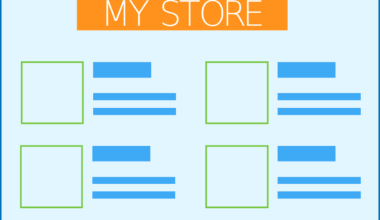Building Responsive Social Applications: A GraphQL and REST Perspective
In the fast-evolving landscape of social applications, developers face the challenge of choosing between GraphQL and REST architectures. Both technologies offer unique advantages that can improve user experience significantly. With GraphQL, developers can request precisely the data they need, leading to minimal network traffic and quicker responses. This efficiency is vital in social applications where user engagement is paramount, and latency can hinder performance. On the other hand, REST APIs have a mature ecosystem, boasting a wealth of libraries and tools that simplify integration and speed up development. When building responsive social applications, we must consider not just API communication but also the front-end technologies that will take advantage of that data. Different user interactions can drastically affect performance on mobile devices, where speed is crucial. By leveraging GraphQL’s querying capabilities alongside REST’s robustness, developers can ensure they deliver the best product. This hybrid approach can also lead to easier iteration of features and functionality based on user feedback. Therefore, understanding both GraphQL and REST is essential for anyone looking to build engaging, responsive social applications.
Understanding GraphQL and Its Benefits
GraphQL has gained immense popularity as a query language for APIs, primarily because of its flexibility and efficiency. It allows developers to specify exactly what data they need, significantly reducing the amount of data transmitted over the network. This capability is particularly beneficial for mobile applications, which often operate under bandwidth constraints. In a responsive social application, users expect quick load times and seamless interactions, which GraphQL can facilitate. Developers can architect queries to include related data in a single request, minimizing round trips to the server. This streamlined process not only enhances performance but also simplifies data management. Furthermore, GraphQL’s strong typing system allows for better tooling and validation, creating confidence among developers when making API changes. Additionally, tools like GraphiQL provide an interactive environment for testing queries, making development more accessible. With real-time capabilities via subscriptions, GraphQL is particularly suitable for social applications that rely on instant updates, like chat messages or notifications. Overall, adopting GraphQL can lead to improved performance, better developer productivity, and enhanced user experiences.
REST, or Representational State Transfer, is a traditional API architectural style that has stood the test of time due to its simplicity and scalability. It represents resources and interactions through standard HTTP methods like GET, POST, PUT, and DELETE, making it easy to understand and use. This simplicity enables developers to build reliable applications where server responses are predictable. For social applications with straightforward data operations, REST can be exceptionally effective, offering a clear paradigm for managing data. Furthermore, extensive tooling and community support for REST make it an attractive option for new projects. Developers find libraries for virtually every programming language, easing API integrations. However, the limitations arise when applications scale or require access to varied data sets in a single request. This is where REST may lack efficiency compared to GraphQL, particularly when needing nested or relational data. Utilizing a RESTful approach can offer clarity and ease of maintenance in simpler applications. Consequently, it is essential for teams to assess project requirements thoroughly before selecting which approach aligns best with their objectives and user needs.
Combining GraphQL and REST
In practice, many developers find that using a combination of GraphQL and REST yields the best results, capitalizing on the strengths of both methods. For example, REST can effectively manage user authentication and serve static resources, while GraphQL can handle complex queries and interactions. This hybrid approach allows teams to leverage existing RESTful services while progressively implementing GraphQL where needed. By adopting this strategy, developers can migrate to GraphQL incrementally, reducing disruption in ongoing projects. Additionally, combining both can help balance the workload on the server and improve data retrieval efficiency. This flexibility enables developers to choose the right tool for each task, potentially enhancing the overall user experience through faster load times and more cohesive data presentation. Furthermore, by developing a unified API schema that encompasses both technologies, teams can create a predictable interface for consumers regardless of the underlying architecture. This approach fosters collaboration between front-end and back-end developers, ensuring smoother development cycles and clarity in communications. Therefore, employing a mixed strategy serves as an actionable pathway for teams aiming to build robust, responsive social applications effectively.
When considering performance optimization in social applications, caching strategies play a pivotal role in enhancing response times. Both REST and GraphQL can implement caching techniques, but the approaches differ due to the nature of their data requests. For REST APIs, caching can occur at the HTTP level, utilizing strategies like ETag headers and cache-control directives to reduce server loads and speed up response times for frequently requested resources. This strategy is particularly useful in social applications where certain content is often accessed repeatedly, such as user profiles or trending posts. In contrast, GraphQL allows for more granular control over caching by implementing cache layers at the level of individual queries. This capability can be especially beneficial when users frequently request specific data types. Libraries like Apollo Client provide solutions for managing cache intelligently to ensure users receive timely and relevant data. A solid caching strategy ultimately minimizes latency and improves the overall responsiveness of the application, keeping users engaged. Therefore, effectively employing caching techniques tailored to the underlying architecture is crucial for delivering a seamless user experience.
Security Considerations
Security remains a critical component when developing modern social applications, and both GraphQL and REST present their own unique challenges and solutions. For REST APIs, one common security measure includes implementing OAuth tokens to validate user identity and control access. Additionally, various methods exist to prevent common vulnerabilities, such as Cross-Site Request Forgery (CSRF) and SQL Injection attacks, which can be prevalent in older APIs. In contrast, GraphQL introduces complexities such as the possibility of over-fetching or under-fetching data, leading to unintentional data exposure. Developers need to implement fine-tuned access controls and validation in their GraphQL resolvers. It’s vital to set appropriate data permissions based on user roles to mitigate security risks. Monitoring and logging all API interactions are also essential to detect anomalies quickly. Secure coding practices should be employed during development to anticipate and address potential threats proactively. Thus, while both architectures offer robust options, it’s essential to implement security considerations tailored to their respective frameworks while ensuring user data protection remains paramount.
In conclusion, building responsive social applications involves understanding the pivotal roles of both GraphQL and REST. Each has its strengths that can offer distinct advantages for various use cases. Consequently, choosing between them is not merely a technical decision but a reflection of the application’s goals, user expectations, and data interaction needs. While GraphQL provides flexibility and efficiency, REST ensures simplicity and reliability. The hybrid strategy whereby developers can blend features from both APIs often emerges as the most effective path forward. By strategically employing these methodologies, developers can not only enhance application performance but also create a more engaging user experience that can adapt as user demands evolve. Combining the strengths of GraphQL and REST, alongside robust caching and security measures, empowers developers to craft social applications that stand out in the marketplace. Users today expect seamless experiences across devices, making the choice of backend architecture a critical component of success. Thus, understanding how to best apply GraphQL and REST in tandem will undoubtedly provide developers an edge in delivering high-quality, responsive social applications.



